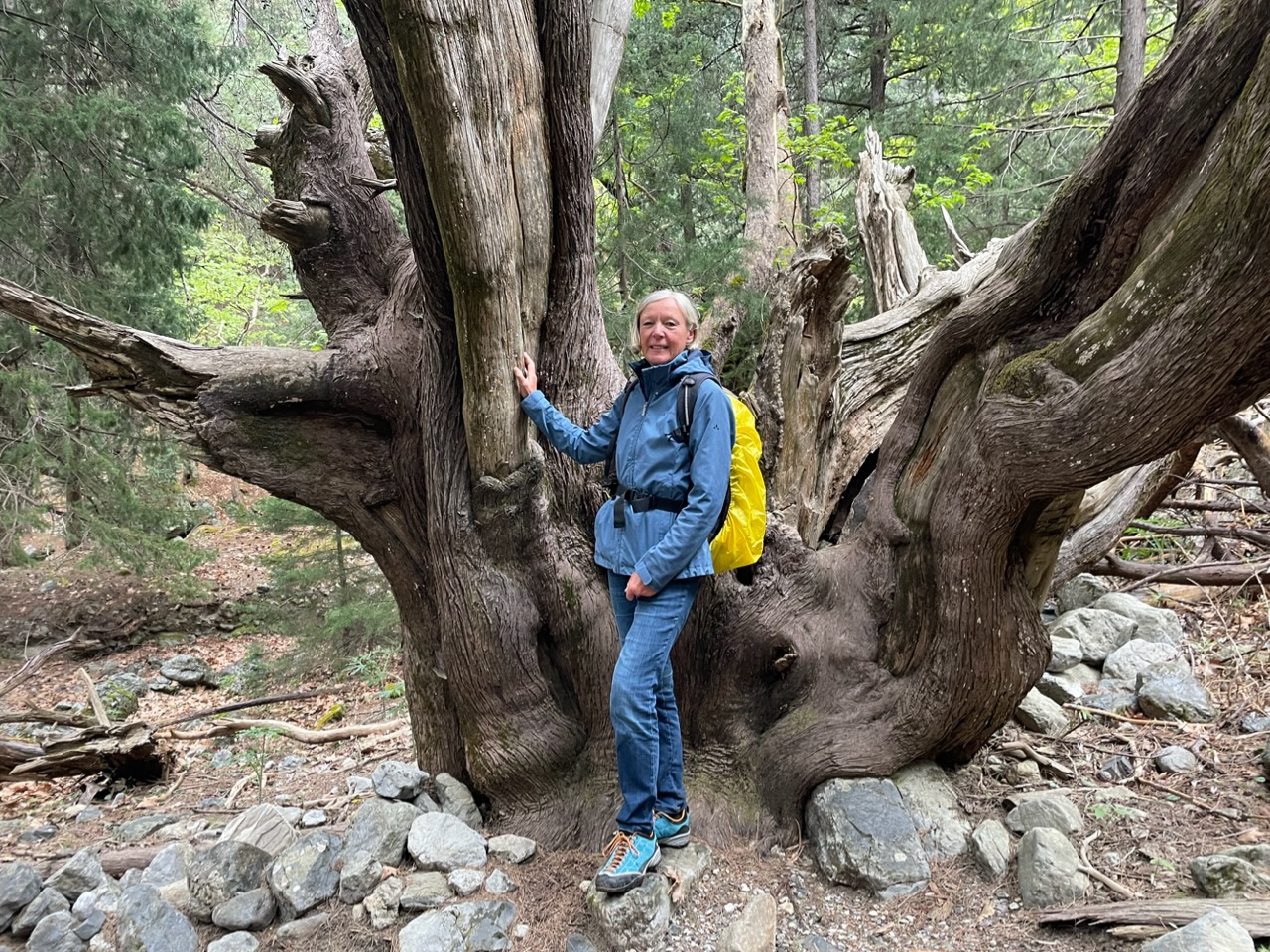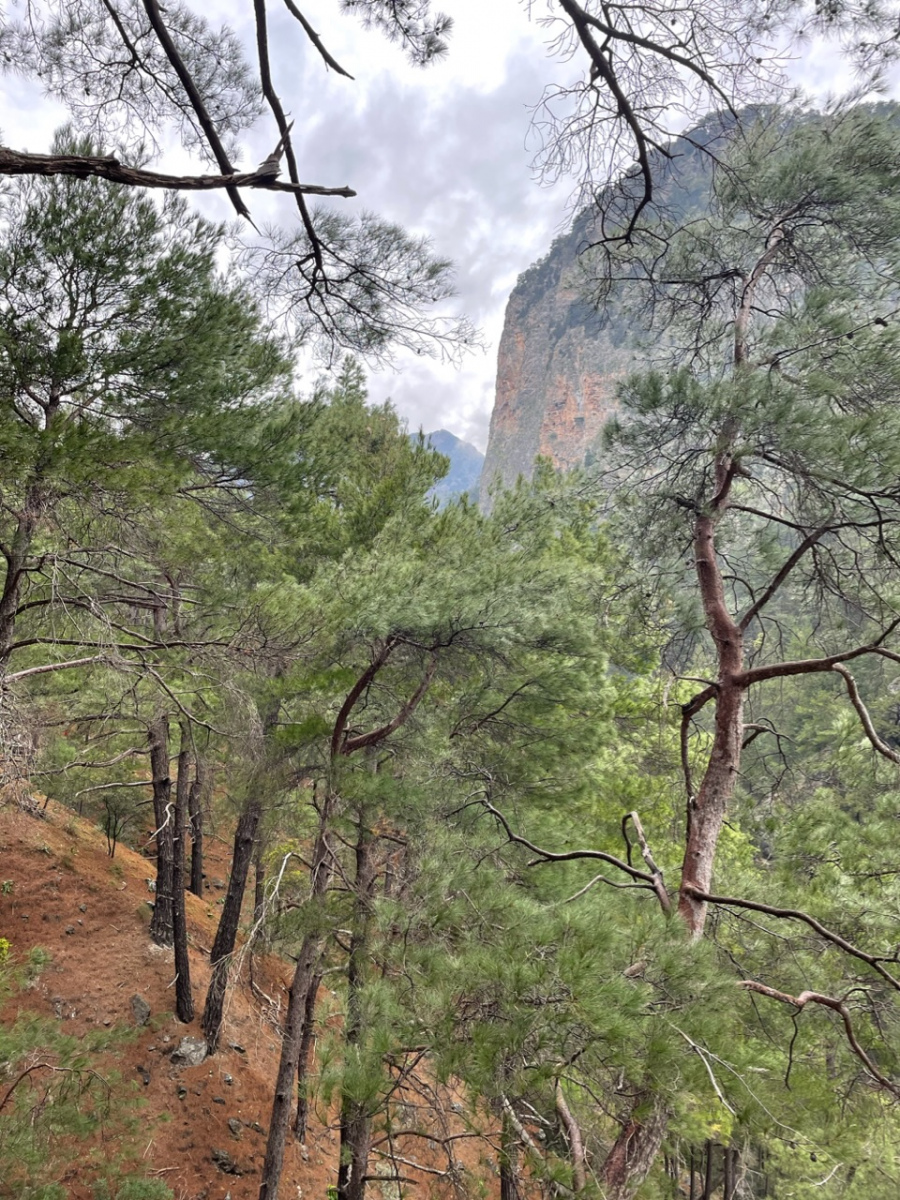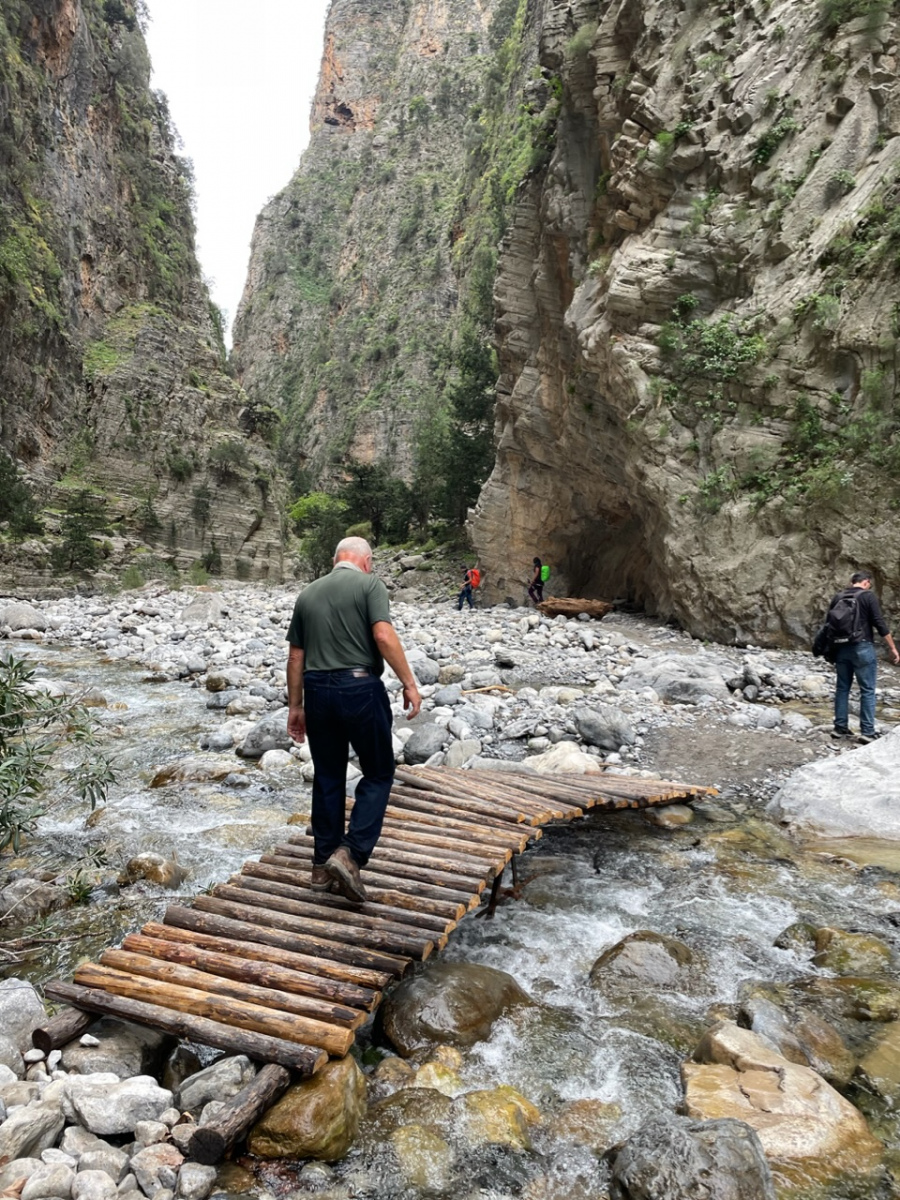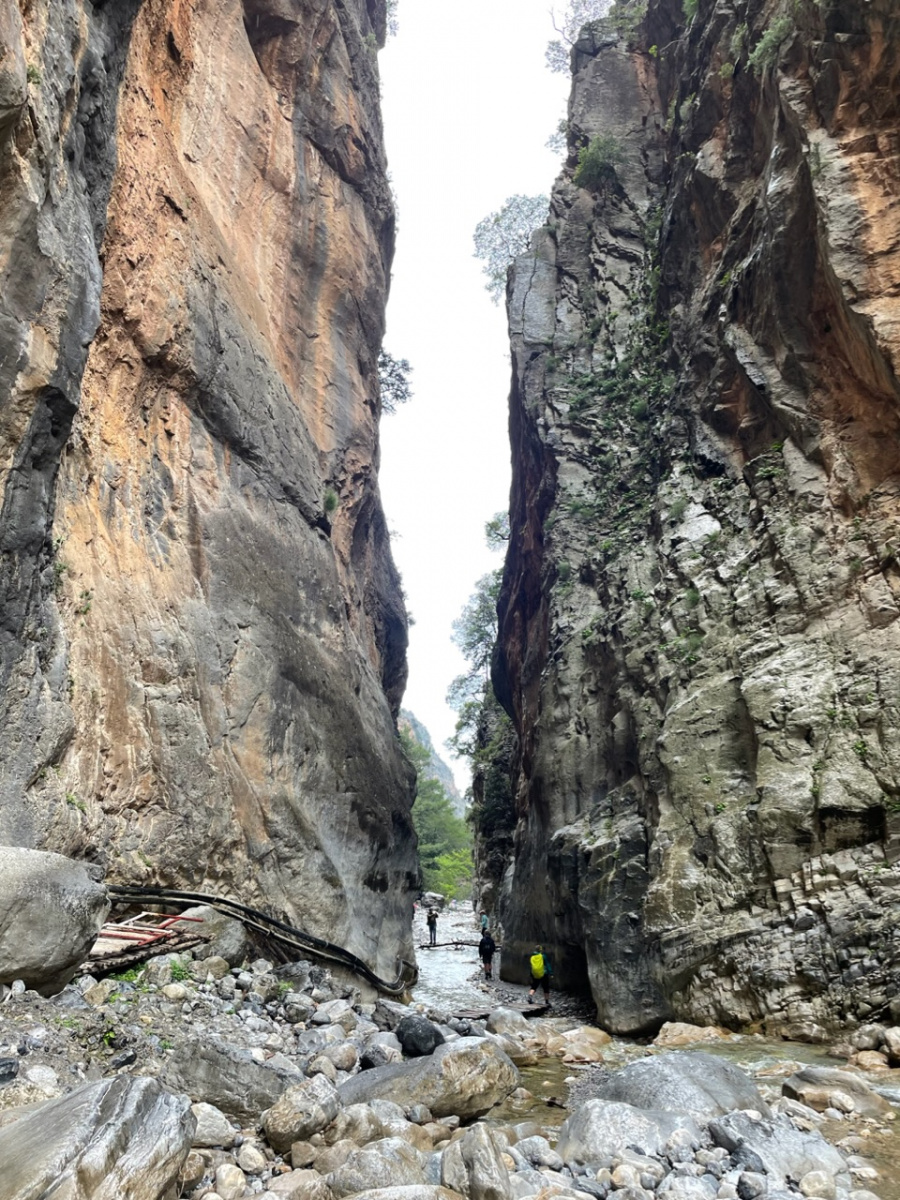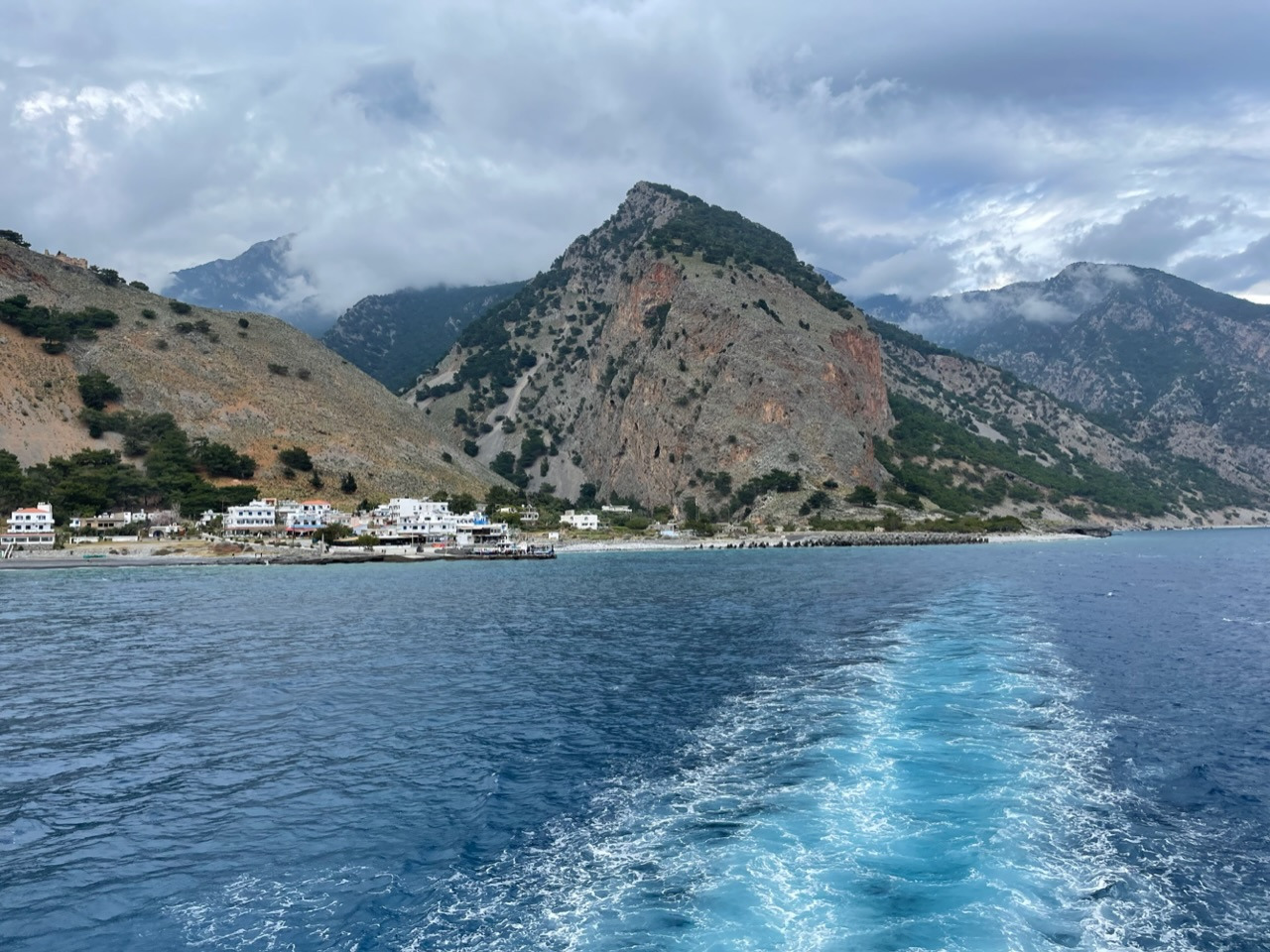
Yesterday was not only the 1st of May, it was also the first day of the year when the Samariá Gorge was open to hikers. We actually didn't have it on the plan at all, because we thought, so early in the year it is not yet possible to hike through it.
Furthermore we are moored with Aglaya in the harbour of Kolimbari, quiet and safe. So we decide to join a tour organized by Mystical Crete. Fits well: Out for the first of May!
This impressive gorge is 14.3 kilometers long. You climb down 1100 meters of altitude and then it's another 2 kilometers to the small harbor of Agia Roumeli. Early in the morning at 6:20 a.m. the bus picks us up. It first drives towards Chania to collect more gorge hikers. Already the drive up to the plain of Omalos is impressive. But when we reach the entrance to the gorge, it is raining heavily. We wait a bit and then we start walking in the drizzle. About three kilometers we go down very steeply. The stones are slippery from the rain. Despite our good walking shoes we have to concentrate very hard not to slip.
Again and again we stop to enjoy the magnificent view: into the high mountains of the Lefka Ori (the White Mountains), eleven peaks in this mountain range are over 2000m high. Particularly imposing is the rugged Gíngios. We look down into the gorge and admire the many different large old trees. Our group disperses, each hiking at their own pace. Our guide Alice follows one hour later to make sure no one is left behind alone.
Gisela has already hiked through the gorge with Greek friends 46 years ago in summer. At that time we spent the night in the deserted village of Samariá, when it was still exceptionally allowed. At that time we were the only hikers. Today, already on the first day of the season, there are more than a hundred people with us. Unimaginable how it will be in summer.
The gorge used to be inhabited by woodcutters and fishermen (probably descendants of the Dorians) who lived here according to their own laws. In 1962 the gorge became a national park. Since then it has been uninhabited. Only a few resting places with toilets are located along the trail.
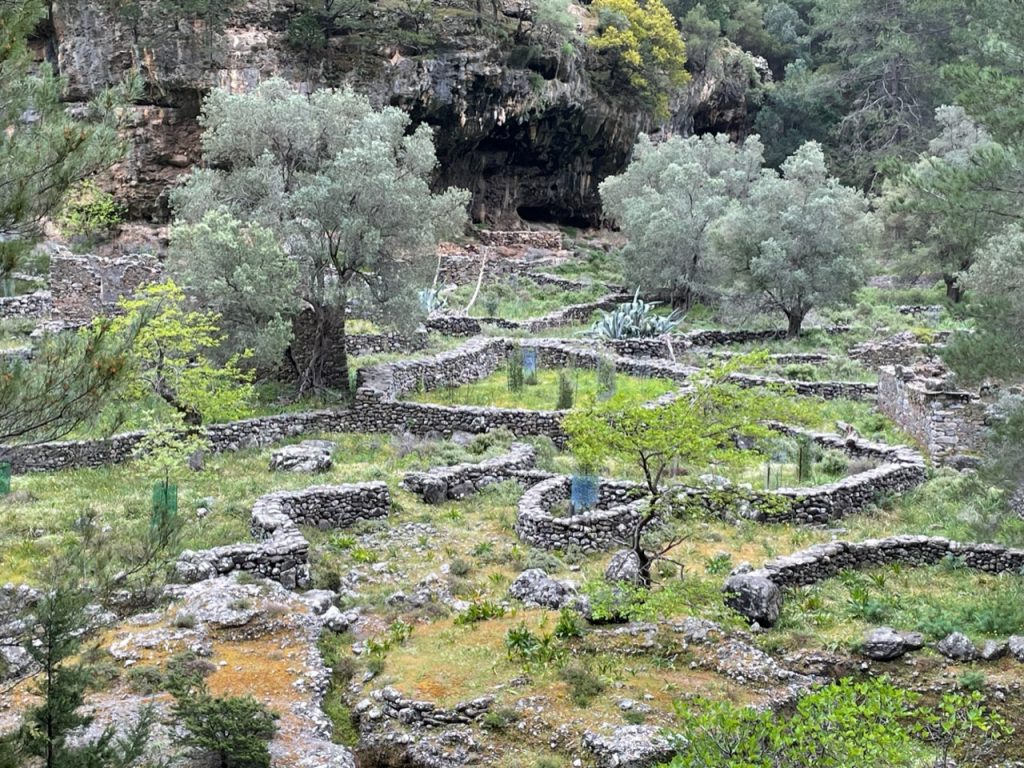

The tree population changes the deeper we descend. First cypresses and pines, then more and more deciduous trees, almost at the bottom then a lot of oleander. Everything is green and colourful. Beautiful! And also the rocks change, first gray, then more and more red.
On a part of the track the water has disappeared, seeping into the calcareous rock. It's easy to walk there. But then we hear it rushing again. The many crossings of the stream are a challenge for our sense of balance.
At the narrowest point, the gorge is only three meters wide. This, of course, is a photo spot for everyone.


After five and a half hours we arrived at the end of the gorge. Our feet and legs are tired and we are thirsty for beer. In Agia Roumeli (which can only be reached by boat) we have a great Mythos on tap while we look out over the Libyan Sea and wait for the boat that will take us to Sougia. Here our bus is waiting. Our group is together again. Our guide praises us ("Whoever has walked the Samariá Gorge is a Cretan."). We enjoy the return trip through the impressive mountain landscape. Tired and satisfied, we get on our boat after a long, exhausting and very impressive day.




